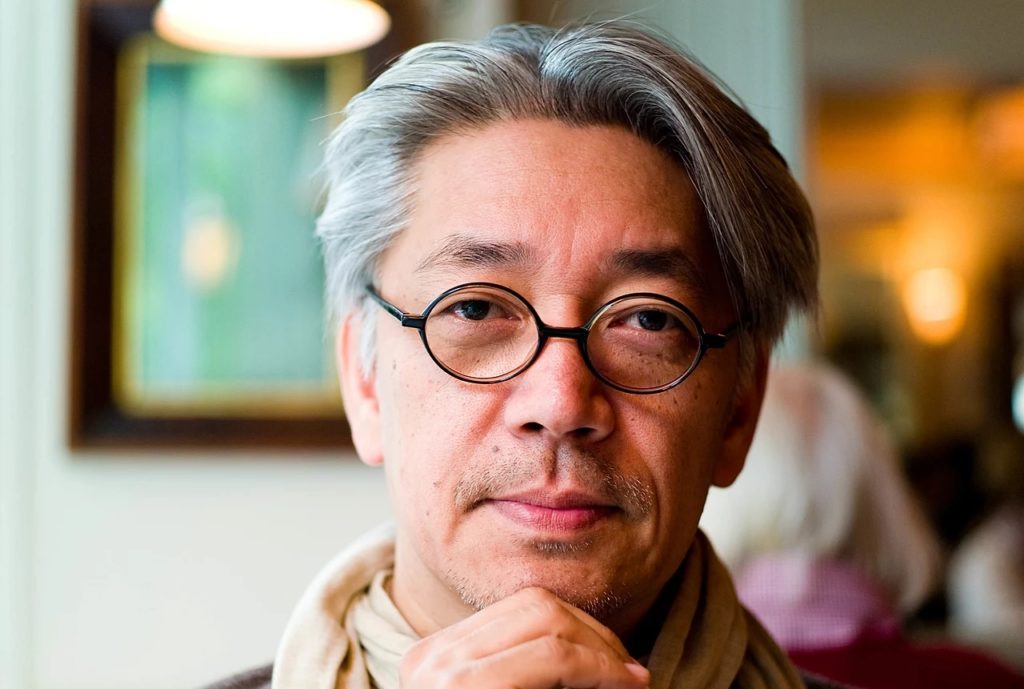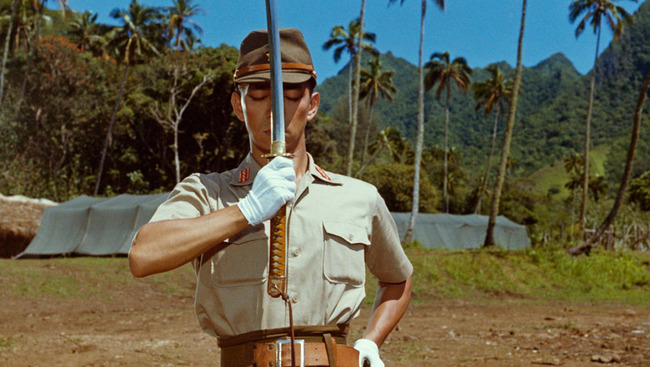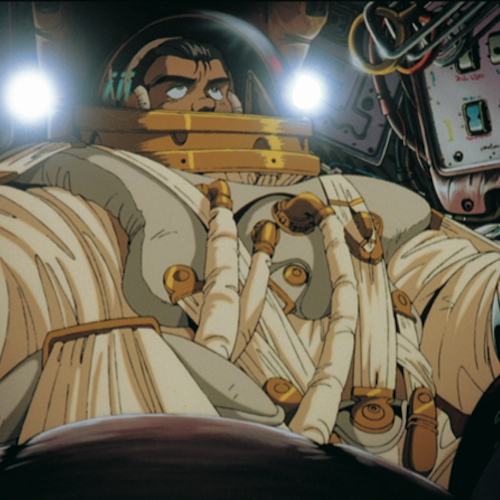Ryuichi Sakamoto (1952-2023)
April 2, 2023 · 0 comments

Ryuichi Sakamoto’s first taste of fame was in the late 1970s, when his band Yellow Magic Orchestra competed with Kraftwerk to become the kings of electro-pop. With synthesiser tracks like “Heroic Raydeen” (a reference to an old anime show), the YMO set the standards for electronic music around the world, kick-starting a boom that has its current exponents in Techno, Ambient and House. YMO were one of the first bands to experiment with synths, drum machines and samplers, and they produced a dozen albums during their five-year career.
Sakamoto described himself as “pretty much schizophrenic”, a techno musician who also provided music for avant-garde dance troupes, pop albums, jazz improvisations, bossa nova and, of course, film scores. With impeccable qualifications, and a long resumé of ‘secret recording work’ as a session musician and composer, Sakamoto was always on a collision course with film composition. But it was his fame as a pop idol that landed him his first film job. The director Nagisa Oshima had cast David Bowie as a prisoner of war in Merry Christmas Mr Lawrence, and was after a suitable opposite number to play the camp commander. Sakamoto’s pop fame and good looks made him an obvious choice, but Sakamoto made some demands of his own. He agreed to play the part, on the condition that he would also compose the music.

Merry Christmas was an international hit, netting Sakamoto worldwide recognition. He ran into the Italian director Bernardo Bertolucci at the Cannes Film Festival, and scored several of Bertolucci’s films. Sakamoto described Bertolucci as a harsh task-master, who forced the techno wild-child to put aside his dabblings with synthesisers and return to his original training in classical music. Bertolucci demanded a full orchestra and ‘emotional’ music fully divorced from the robot melodies of Sakamoto’s YMO days. Sakamoto did as he was told, and the result was his most successful compositions ever. The Last Emperor scooped an armful of Oscars in 1987, including one for the haunting music Sakamoto provided with in collaboration with David Byrne and Cong Su. It went on to pick up a Grammy, a Golden Globe, and several other awards.
While Sakamoto enjoyed film work, it also brought difficulties. “I would really like to work with people who understand music,” he once said. “Film directors can just cut out a couple of frames to make things fit, but I have to rearrange an entire song if they do that. One director could cut out an entire scene, just after I’d finished writing the music for it.” On a standard film soundtrack, Sakamoto provided perhaps forty pieces of music, although he tended to write three times as many which fall by the wayside. Some of them return to haunt his detractors: the centrepiece of his Sweet Revenge tour was a piece of music which Bertolucci had deemed unsuitable for Little Buddha. Sometimes when talking about Sweet Revenge, Sakamoto inadvertently dropped the ‘sweet’ part.

But many of these artistic difficulties did not apply in his film score for The Wings of Honneamise. Animated films, already storyboarded to the exact frame, are less liable to cuts and last-minute changes. “I had precise timings before I started,” he said, “and that made things much more convenient.” Despite its accolades in anime fandom, Sakamoto’s involvement in The Wings of Honneamise went unnoticed by mainstream critics and film fans, and was not included in a Sakamoto retrospective on London’s South Bank.
Although Sakamoto got top billing on the Honneamise CD and produced the album as a whole, seven of the fifteen tracks were the work of other artists. Yuji Nomi and Koji Ueno had worked with Sakamoto on the little-known Kitten’s Tale soundtrack, and their work for Honneamise included the battle theme “War” and the operatic interlude “Annyamo” (with lyrics and performance by real-life opera singer Mizuki Moriya). It was Sakamoto, however, who wrote the remaining eight tunes, including the striking main theme, the music for the closing credits and “Lequinni’s Theme”. Sakamoto’s artistic ‘schizophrenia’, caught between the classical past and the electric future, made him the perfect choice for such an unearthly approach. He commented that he sought a “deliberate mismatch” of musical styles to create an alien effect, and on Honneamise the approach was a brilliant success.
Nor would it be his last anime adventure. Sakamoto also worked on the music for the kids’ dinosaur tale Sayonara Tyranno, as well as the theme song to Exception, a 2022 science fiction horror series about space explorers generated by a 3D biological printer, one of whom gets spat out of the machine with a few bugs in his system. His pop music was so much a part of Japanese life in the 1980s that it should come as no surprise that “Ikenai Rouge Magic” was reprised in the recent Urusei Yatsura remake.
Leave a Reply